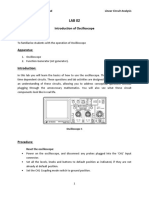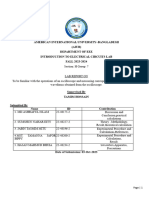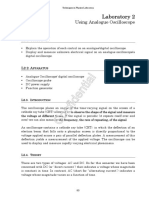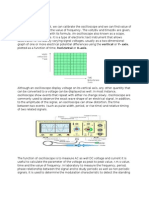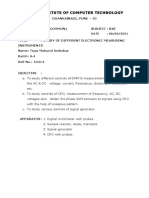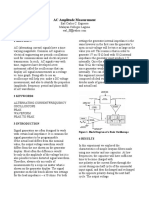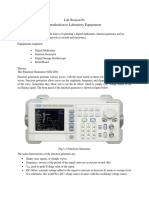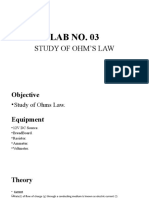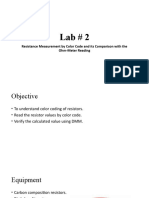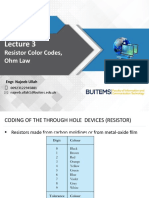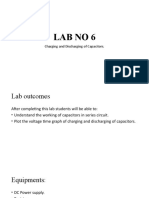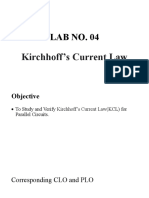0% found this document useful (0 votes)
40 views9 pagesLab#9
The document describes how to use an oscilloscope to measure voltage, frequency, and time period of an electrical signal. It explains the basic components and functions of an oscilloscope including probes, function generators, and how to interpret displayed waveforms. The procedure outlines connecting the equipment and taking measurements of peak-to-peak voltage and calculating frequency using the oscilloscope's voltage and time divisions. The objective is to introduce how an oscilloscope can be used to analyze electrical signals.
Uploaded by
Mugheera MalikCopyright
© © All Rights Reserved
We take content rights seriously. If you suspect this is your content, claim it here.
Available Formats
Download as PPTX, PDF, TXT or read online on Scribd
0% found this document useful (0 votes)
40 views9 pagesLab#9
The document describes how to use an oscilloscope to measure voltage, frequency, and time period of an electrical signal. It explains the basic components and functions of an oscilloscope including probes, function generators, and how to interpret displayed waveforms. The procedure outlines connecting the equipment and taking measurements of peak-to-peak voltage and calculating frequency using the oscilloscope's voltage and time divisions. The objective is to introduce how an oscilloscope can be used to analyze electrical signals.
Uploaded by
Mugheera MalikCopyright
© © All Rights Reserved
We take content rights seriously. If you suspect this is your content, claim it here.
Available Formats
Download as PPTX, PDF, TXT or read online on Scribd
/ 9


